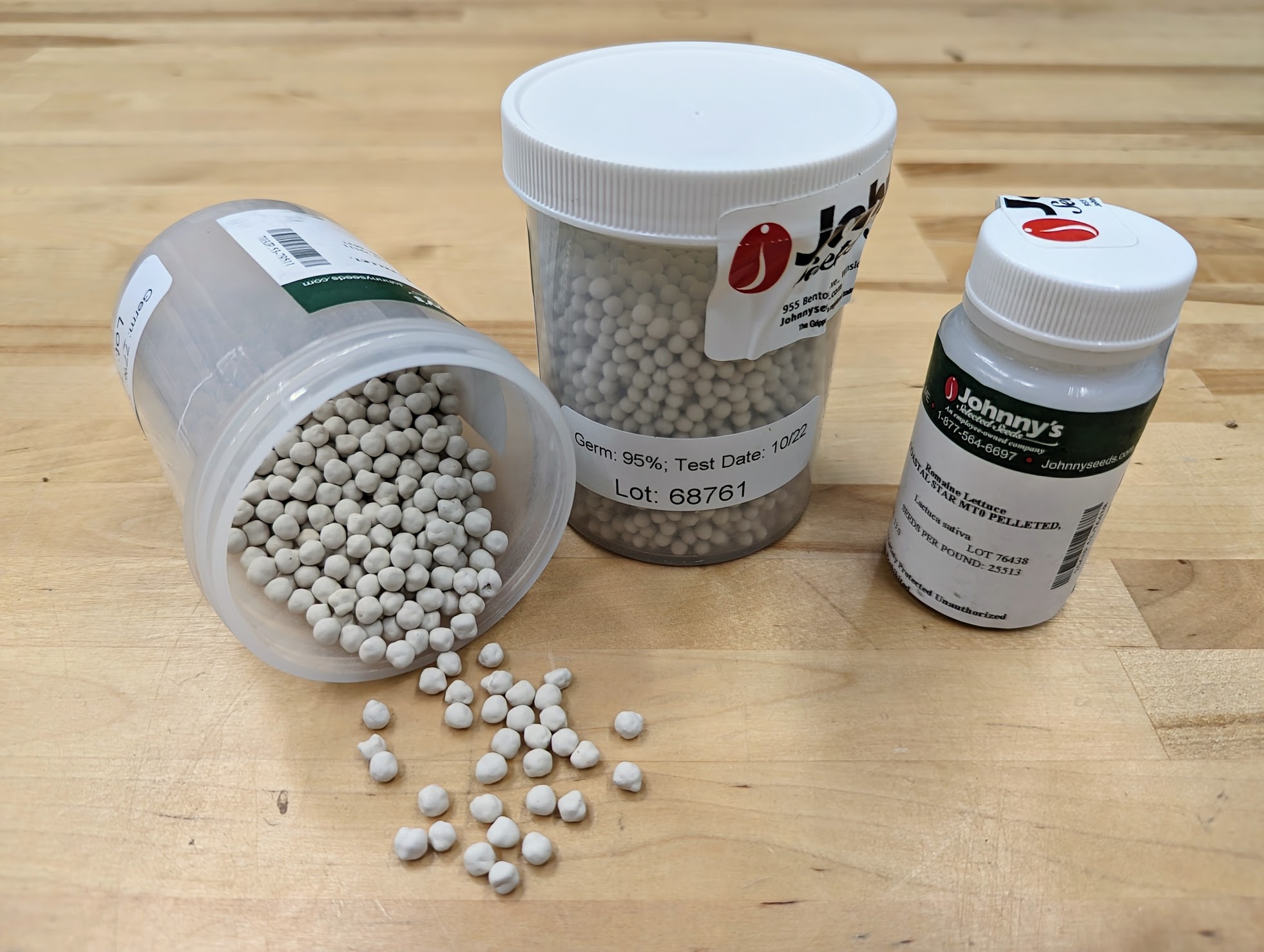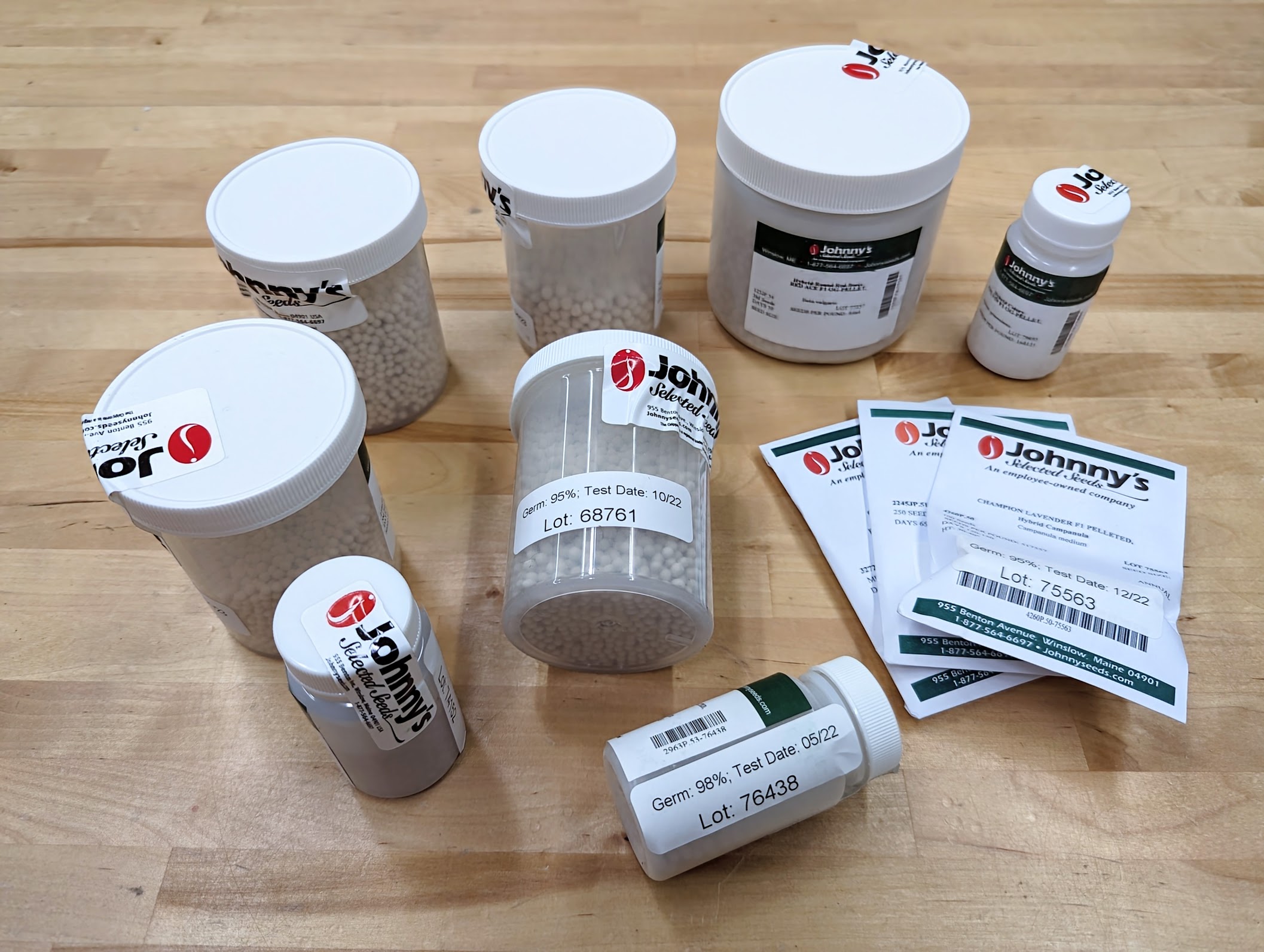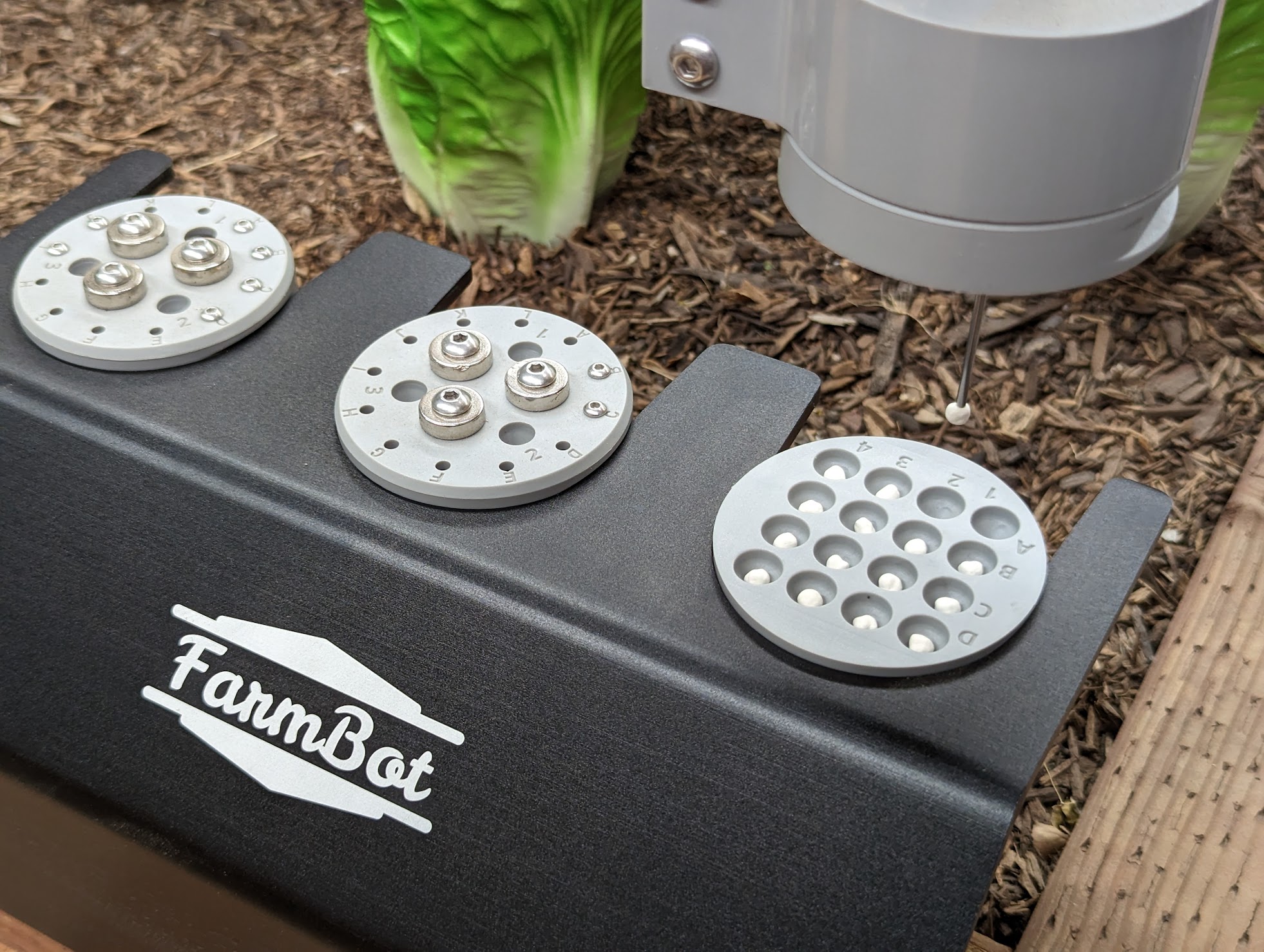Seeds
Tips for selecting seeds to use with FarmBot
There are three main considerations when choosing seeds to plant with FarmBot:
Follow the guidelines below to give yourself the best chance of germination success and a bountiful growing season, while minimizing the likelihood of running into avoidable problems.
While we do encourage experimentation and pushing your garden to its limits, we recommend starting off with crops that are known to work well with FarmBot for at least one or two growing seasons.
Plant size and shape
Optimal crops for FarmBot are small to medium in size and grow in a predictable shape.
The table below shows some common garden crops and whether or not they are recommended for use with FarmBot. Recommendations are based on the size and shape of the plant, and do not take into account a crop’s requirements such as your local climate.
| Category | Crop | Recommended? |
|---|---|---|
| Leafy greens | Arugula | |
| Bok Choi | ||
| Chard | ||
| Kale | ||
| Spinach | ||
| Lettuce | ||
| Root vegetables | Beets | |
| Carrots | ||
| Onions | ||
| Radishes | ||
| Turnips | ||
| Herbs | Basil | |
| Cilantro | ||
| Dill | ||
| Parsley | ||
| Fruiting | Strawberries | |
| Tomatoes |
|
|
| Vining | Beans |
|
| Cucumbers |
|
|
| Melons |
|
|
| Pumpkins |
|
|
| Squash |
|
|
| Tall | Corn |
|
| Sunflowers |
|
|
| Trees and bushes | Apples, Peaches, etc |
|
Vining crops
Vining crops that grow in an indeterminate fashion such as non-dwarf varieties of Tomatoes, Beans, Cucumbers, Melons, Pumpkins, or Squash may cause interference with FarmBot’s movements if the plants grow in unexpected directions (eg: over the FarmBot’s tracks) or fruit in unexpected locations.
Vining crops may also cause issues with weed detection and removal, with the potential to significantly hinder performance or create false detections.
Vining crops can be grown with caution at the two short edges of the bed, where they can be trained (by hand) to grow out and away from the FarmBot’s mechanical systems. Regular (manual) pruning may be required to ensure the plants do not grow into the main bed area.
Tall crops
Tall crops such as Corn or Sunflowers that will grow to exceed the ~0.6m (~2ft) height of the gantry are not recommended to be grown in the main area of the FarmBot’s raised bed. Planting such crops in this space may prevent FarmBot from moving, or the FarmBot may destroy the plants once they are too tall.
Tall crops can be grown with caution at the two short edges of the bed, where the gantry can move up to them, but does not need to pass over them. You will need to exercise caution in how your FarmBot is configured once the plants reach a certain height.
Share your experience
Tried something experimental? Share your experience on the community forum!
Crop requirements
As with all methods of growing, you will need to choose crops with requirements that are compatible with your geographic location, FarmBot location, soil conditions, and the time of year. Specific things to consider include:
| Requirement | Considerations |
|---|---|
|
|
Is your FarmBot bed located in full sun or partial sun? If indoors, do you have growing lights? |
|
|
What type of soil is in your FarmBot bed? Is it well draining? Is it high in organic matter? |
|
|
How deep should the seeds be planted? |
| 🌱 Transplanting/thinning | Does this crop need to be transplanted or thinned at a certain age? |
|
|
How much water does the crop need? Do you have an abundance of water available? What is the average rainfall in your area at this time of year? |
| 🍂 Recommended season | Is it the right time of year to plant this crop? |
|
|
What is the average temperature and temperature range in your area at this time of year? |
|
|
Does your area experience frost? Are you planting late enough to avoid the last frost and early enough to avoid the first frost? |
|
|
Does your area experience high winds? Are you attempting to grow taller crops that could be blown down? |
|
|
Are there birds or other animals in your area that may eat your crops before you do? |
|
|
Are there common insects or diseases in your area that may harm your crops? |
Tap into local knowledge
We recommend visiting your closest nursery, hardware store, or gardening club to talk to a local expert for your area. They will be able to recommend crops based on your conditions and the season.
If there are no experts available, use the information on the back of seed packets, available in the FarmBot web app, or check out other online resources.
Seed type
FarmBot can take care of plants from seed as well as from seedlings, bulbs, and tubers. However, depending on what you’re starting with will determine the available methods of planting.
For best results, use pelleted seeds from a supplier such as Johnny’s Selected Seeds.
| Planting with FarmBot | Manual planting | |
|---|---|---|
| Pelleted seeds | ||
| Non-pelleted seeds | ||
| Seedlings | ||
| Bulbs | ||
| Tubers |
Pelleted seeds
FarmBot’s seeding capability utilizes a luer lock needle and vacuum pump to pick up and suction-hold a seed onto the tip of the needle for precise deposition into the soil. Different diameter needles can be used for different seed sizes, where small seeds such as those of Lettuce can be picked up with a smaller needle, while larger seeds such as those of Squash can be picked up with a larger needle.
We recommend using pelleted seeds from Johnny’s Selected Seeds. They have a large selection of high quality, non-GMO seeds that are professionally tested, pelleted, and packaged. You may also find pelleted seeds at a local farm supply store or from other online retailers.
What are pelleted seeds?
Pelleted seeds are coated with a biodegradable material that ensures they are of a uniform size and shape (usually a sphere). They are specifically designed for use with farming equipment because they are easier and more reliable for machines to work with. When using pelleted seeds with FarmBot, your FarmBot will be able to more reliably pick up one seed at a time and place it in its intended location.





Non-pelleted seeds
If using non-pelleted seeds, it is important to select the most optimal needle size and be aware of the following challenges:
- Too many seeds may get sucked onto the needle at once.
- Seeds may get sucked through the needle and clog the vacuum pump.
- Irregular seed surfaces may prevent reliable suction holding power.
If you have trouble using non-pelleted seeds, you may manually plant them instead.
Seedlings, bulbs, and tubers
Some very small or very large seeds as well as seedlings, bulbs, and tubers will not work with FarmBot’s automated seeding system, though you can still grow them with FarmBot once they have been manually planted.
To manually plant something, first add the plant to your farm designer map in the web app. Then instruct FarmBot to move to the plant location and dispense a very small amount of water to mark the soil. Dig a small hole of the appropriate depth and insert the seedling, bulb, etc by hand in the center of the marked location.